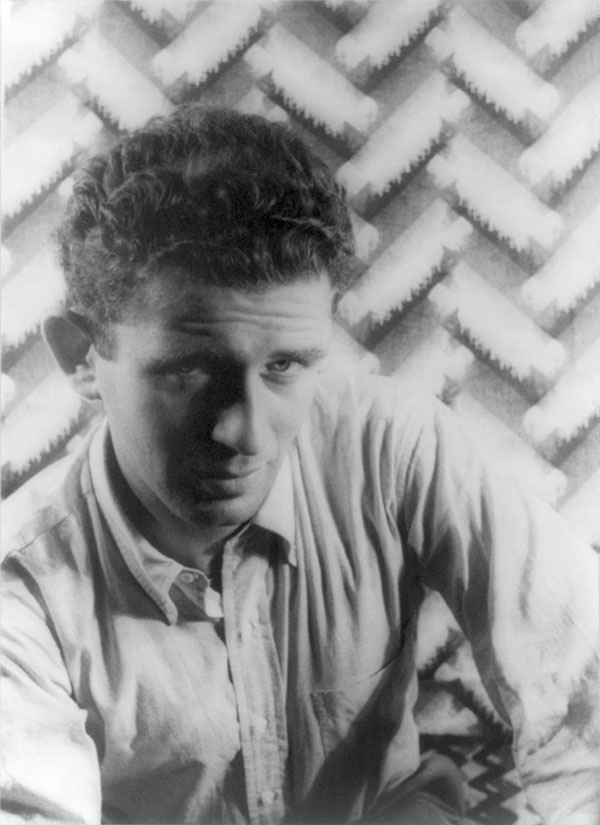
This is a story less from the field than the archives, specifically of the two weeks I spent foraging in the Norman Mailer papers at the Harry Ransom Center (HRC) of the University of Texas at Austin. In my current book project, The Mask of Cool: Jazz, Film Noir, and Existentialism in Postwar America, I theorize the origins of the concept of cool as it emerges in postwar jazz culture. Mailer was one of only two writers to consider jazz musicians as organic American existentialists. He published many articles on "The Hip and the Square," but left a sparse paper trail with regard to his knowledge of jazz. In letters, journals, and unpublished fragments, I hoped to find references to individual jazz musicians, perhaps also in early drafts of Mailer's "The White Negro" (1957), an important essay now often excoriated for its racism and sexism.

The exciting part of archival research is detective work and my first useful connection came almost too easily: early drafts of "The White Negro" carried the title, "Dialectic of the American Existentialist." And yet, no jazz there. I examined every folder in the three years leading up to the essay, a period in which Mailer was obsessed with the idea of "hip" and "the hipster," and kept finding references to an important journal. He even mentioned this journal in an introductory note to an essay in Advertisements of Myself (1959); he referred to it as the repository of a certain set of epiphanies. So unless Mailer threw out the journal – which seemed unlikely – it had to be somewhere in the more than one thousand boxes of material. I scanned the finding aid for anomalous notebooks. There were many and few had anything of import.
In Box 1032 – one of the last – was something called "Lipton's Journal." I put in a call slip and I was soon greeted by one of the Ransom Center archivists who had helped catalogue the collection. Off-hand, "Lipton's Journal" did not ring a bell; it turned out the journal was one of the few documents to which Mailer restricted access until after his death. I was at the Ransom Center less than a year after Mailer passed on. I was probably one of the first scholars ever to read it.
The journal was undated and kept in its own box. It was more than two hundred and fifty typed pages on onionskin paper filled with numbered paragraphs from 1-300. It was quite a find.
What was "Lipton's Journal?" During the three-month period between late December 1954 and March 1955, Mailer began smoking marijuana every weekend and on Monday and Tuesday nights, writing a dozen pages transcribing his thoughts. The entire intellectual back-story of "The White Negro" can be found in these intellectual "pot-driven" fever dreams: there was endless self-analysis, indictments of the neurotic repression of the American middle class, odes to Marx and Freud, satires of left-wing intellectuals, ridiculous riffs on linguistics, uncharacteristic confessions of love for his wife and father, and over and over, a return to "the saint" and "the psychopath," two figures that converge into "the hipster" in "The White Negro."

As I read it, I thought, hmm, why "Lipton's Journal?" My first hypothesis was that it was the transparent coding of a teen-ager. In the 1950s, a common nickname for marijuana was "tea," and thus this was his journal written while on "tea," thus "Tea Journal," and so, "Lipton's Journal." Turns out I was right. I later stumbled on a printed copy of Lipton's Journal – he probably meant to (or tried to) publish it – where Mailer refers to "the not very opaque alias of Lipton's."
Unfortunately, I can't quote even a single line – here or in my book – since the Mailer Estate will not give permission, whether to hold it for the authorized biography in the works or due to material the family finds embarrassing, I do not know.
And yet: I got what I came for. In Lipton's Journal, I found references to the genius of Dizzy Gillespie, the interplay of Dave Brubeck and alto saxophonist Paul Desmond, a comparison of the aesthetic approaches of swing and bebop musicians, and much on the language of jazz musician, or as Mailer called it, "the jazz argot."
Two weeks after I returned to New Orleans, I contacted the Executor of the Mailer Estate to ask if anyone was considering publishing an abridged version of this important text from one of the major American writers of the twentieth century. I made an argument as to its importance and its potential sales. I volunteered my services as editor, or to write an introduction. The lawyer never responded.

